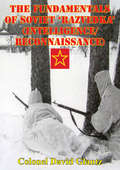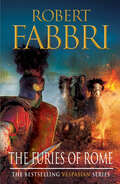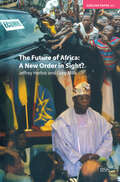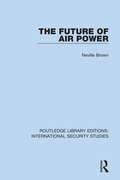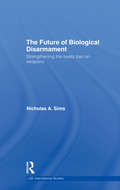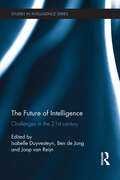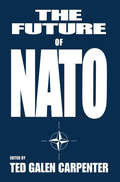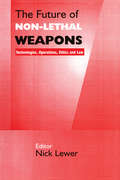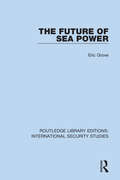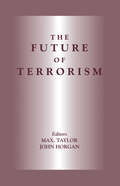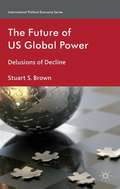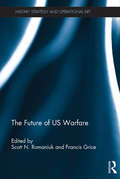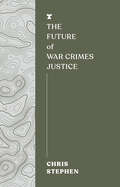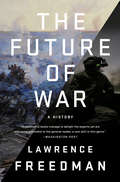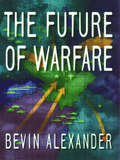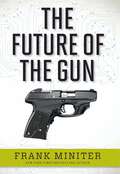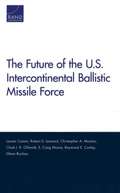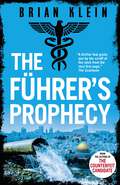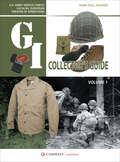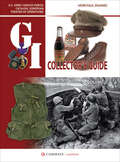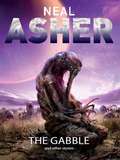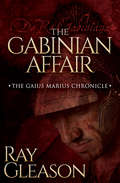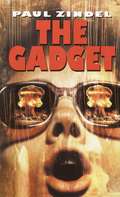- Table View
- List View
The Fundamentals Of Soviet 'Razvedka' (Intelligence/Reconnaissance)
by Colonel David M. GlantzIntelligence, simply defined as knowledge of the enemy and his intentions, is seldom a decisive factor in war. It does not alter the strength of contending armies and the overall war aims of contending states, and it may have little effect on the planning and conduct of operations. A force which lacks good intelligence may still succeed because of its strength, sound planning, and military efficiency. The converse is also true.Sound intelligence, however, can affect a nation's decision to go to war in the first place; and, once that nation is at war, it can reveal enemy intentions and dispositions. While providing a foundation for sound planning, it also forms a basis for conducting and verifying the effects of deception. Consequently, intelligence provides leverage with which to accentuate the positive effects of military actions, be they offensive or defensive.- Intelligence collection, analysis, and exploitation is a difficult process, made more so by the fog of war and by chance, which makes its effects even less predictable...Few nations have developed a healthier respect for the relationship between intelligence and warfare than has the Soviet Union. The four years of warfare on the Eastern Front during the Second World War, known by the Soviets as the Great Patriotic War, were unprecedented In scale and intensity. From the commencement of Barbarossa on 22 June 1941 to the end of the European war in May 1945, intelligence played a significant role in the course and outcome of operations. Most Westerners have only a sketchy awareness of that role. The Soviet intelligence failure of June 1941 and the apparent intelligence success at Kursk in 1943 have received attention in numerous works. Yet the appreciation of both has been, at best, superficial, replete with generalizations which have characterized most descriptions of war on the Eastern Front.
The Furies of Rome (Vespasian #7)
by Robert FabbriAD 58: Rome is in turmoil once more. Emperor Nero has set his heart on a new wife but to clear a path for her, he must first assassinate his Empress, Claudia Octavia. Vespasian needs to tread carefully here—Nero's new lover, Poppaea Sabina, is no friend of his and her ascent to power spells danger. Meanwhile, Nero's extravagance has reached new heights, triggering a growing financial crisis in Britannia. Vespasian is sent to Londinium to rescue the situation, only to become embroiled in a deadly rebellion, one that threatens to destroy Britannia and de-stabilize the empire.
The Future Security Environment in the Middle East: Conflict, Stability, and Political Change
by Daniel L. Byman Nora BensahelThe setting for conflict, stability, and political change in the Middle East just prior to 9-11-2001. Research commissioned by the U.S. Air Force and made available for public viewing.
The Future of Africa: A New Order in Sight (Adelphi series #361)
by Jeffrey HerbstThis book provides a review of recent development in Africa. It reviews NEPAD and the AU and suggests what must be done for African countries to reverse their growth and security trajectories by asking if any African country will establish the prerequisites for sustained high-level growth.
The Future of Air Power (Routledge Library Editions: International Security Studies #8)
by Neville BrownAir power has been one of the key elements in modern warfare. This book, first published in 1986, analyses the likely changes to this key role as military technology and strategic thinking evolve. It begins with the history and present status of air power and assesses technical developments, and then discusses the character of future warfare, and its implications for planes and helicopters in land and sea campaigns. It also analyses issues like tactical air mobility, the vulnerability of airfields, aerial mass destruction, electronic warfare, and developments in NATO and Warsaw Pact. It concludes with an overview of the likely role of airpower in future warfare.
The Future of Biological Disarmament: Strengthening the Treaty Ban on Weapons (LSE International Studies Series)
by Nicholas A. SimsThis book examines the politics of biological disarmament, focusing on the Biological Weapons Convention (BWC) as a treaty regime and the cornerstone of biological disarmament efforts. Biological weapons have long been banned, but the ban needs strengthening. The 1972 Biological Weapons Convention (BWC) is the cornerstone of this disarmament regime. After years of deadlock and disappointment its Sixth Review Conference in 2006 generated new hope that biological disarmament could be reinforced from within. This book studies the intricate diplomacy of the Sixth Review Conference as a key moment in the recovery of self-confidence by the treaty parties. It makes detailed proposals for developing an accountability framework and stronger institutions so that the treaty regime can work better. It examines alternative futures for the BWC and the trajectories to be avoided or encouraged in the short, medium and longer terms as its regime evolves. Controversially, by comparing treaty constraints on biological, chemical and nuclear weapons it restores the BWC firmly to the realm of disarmament rather than arms control and rescues it from misleading identifications with counterproliferation and counterterrorism models. This book will appeal to policy-makers, diplomats and students of biological weapons, weapons of mass destruction, international security and IR in general. Nicholas A. Sims is Reader in International Relations at the London School of Economics. He is author of four books on aspects of disarmament.
The Future of Intelligence: Challenges in the 21st century (Studies in Intelligence)
by Isabelle Duyvesteyn Ben De Jong Joop Van ReijnThis volume discusses the challenges the future holds for different aspects of the intelligence process and for organisations working in the field. The main focus of Western intelligence services is no longer on the intentions and capabilities of the Soviet Union and its allies. Instead, at present, there is a plethora of threats and problems that deserve attention. Some of these problems are short-term and potentially acute, such as terrorism. Others, such as the exhaustion of natural resources, are longer-term and by nature often more difficult to foresee in their implications. This book analyses the different activities that make up the intelligence process, or the ‘intelligence cycle’, with a focus on changes brought about by external developments in the international arena, such as technology and security threats. Drawing together a range of key thinkers in the field, The Future of Intelligence examines possible scenarios for future developments, including estimations about their plausibility, and the possible consequences for the functioning of intelligence and security services. This book will be of much interest to students of intelligence studies, strategic studies, foreign policy, security studies and IR in general.
The Future of NATO
by Ted Galen CarpenterThe end of the Cold War has raised questions about the future of NATO. Now that the threat from the Warsaw Pact has disappeared, there seems little need for a Western military alliance of such magnitude. The contributions here offer various views on NATO's future.
The Future of Non-lethal Weapons: Technologies, Operations, Ethics and Law
by Nick LewerThese essays explore the increase in interest in non-lethal weapons. Such devices have meant that many armed forces and law enforcement agencies are able to act against undesirables without being accused of acting in an inhumane way. Topics for discussion in this volume include: an overview of the future of non-lethal weapons; emerging non-lethal technologies; military and police operational deployment of non-lethal weapons; a scientific evaluation of the effectiveness of non-lethal weapons; changes in international law needed to take into account non-lethal technologies; developments in genomics leading to new chemical incapacitants; implications for arms control and proliferation; the role of non-lethal weapons in human rights abuses; conceptual, theoretical and analytical perspectives on the nature of non-lethal weapons development.
The Future of Sea Power (Routledge Library Editions: International Security Studies #9)
by Eric GroveThis book, first published in 1990, presents a fundamental reassessment of maritime strategy. It analyses the lessons of twentieth-century naval warfare and examines in detail the changing face of naval warfare, both in terms of the weapons used and the platforms from which they are launched and controlled. It looks at the evolving uses of the seas, both economic and military, and sets sea power against the developing world environment, political, legal and economic, discussing those factors that stimulate nations to exert power at sea and those that limit their naval capabilities. It also develops a theoretical framework for future thinking about maritime strategy and forces, revises and updates Mahan’s classical analysis of the foundations of sea power, and discusses thinking about naval tasks.
The Future of Terrorism (Political Violence #Vol. 9)
by John Horgan Max. TaylorThese papers from a meeting on terrorism in Cork in 1999 include: the effects of changing geo-politics on terrorism; strategic and tactical responses to innovations in terrorism; the changing nature of terrorism; the threat of weapons of mass destruction; and single-issue terrorism.
The Future of US Global Power
by Stuart S. BrownDispelling the myth of decline, Stuart Brown argues that the US continues to enjoy the economic, political, cultural and military underpinnings befitting a pre-eminent global power. He provides an analytical tour through the major domestic and foreign policy issues that will impact the United States' future position and role in the global system.
The Future of US Warfare (Military Strategy and Operational Art)
by Francis Grice Scott N. RomaniukThis book provides an interdisciplinary analysis of the future of US warfare, including its military practices and the domestic and global challenges it faces. The need to undertake a comprehensive analysis about the future of warfare for the US is more pressing today than ever before. New technologies and adversaries, both old and new, have the potential to revolutionize how wars are fought, and it is imperative that policy makers, military planners, and scholars engage with the latest analyses regarding these new threats and weapon systems. The primary aim of this book is to provide a clear and comprehensive depiction of the types of conflict that the United States is likely to become involved with in the future, as well as the methods of warfare that it may employ within these struggles. While a number of scholarly books have previously considered some of the potential features of US warfare in the future, many of these writings are either outdated or have limited their focus to just one or two of the main types of warfare that may occur and omitted consideration of the others. This book intends to remedy this deficiency in the literature. The volume consists of thematic chapters which address the key issues relevant to the future of US warfare, including cyber warfare, asymmetric conflicts, drone warfare, and nuclear strategy. Through the provision of a series of analyses by leading international academics, the volume provides an important interdisciplinary examination of the different areas of warfare that the United States is expected to use or encounter in the future. This book will be of great interest to students of US foreign policy, military studies, strategic studies and International Relations in general.
The Future of War Crimes Justice
by Chris StephenFrom Russia to The Democratic Republic of Congo to Myanmar, Chris Stephen ponders the future of prosecuting war criminals who think themselves untouchable in this timely new book, part of Melville House FUTURES series.We are all too familiar with the horrors of war. Throughout history, rules have been laid down to govern the conduct of war, with varying success. Today, the International Criminal Court (ICC) in the Netherlands is the world's first permanent war crimes court, but since it opened in 2002, it has jailed just 4 people. So what has gone wrong?Journalist and ex war-correspondent Chris Stephen takes a look at the colorful history of how war law was devised, asking complicated and important questions such as: What constitutes a war crime? How and when can the law step into prosecute? Today, membership of the ICC is voluntary. Of the UN&’s 193 member states, 123 are in the ICC. But most of the world&’s war crimes are committed by the other 70. Simply put, governments that commit war crimes don&’t join the ICC – like Russia, for example.How then, do we go after war criminals? Follow the money, argues Stephen, and go after the banks and corporations that enable warlords. It worked for Al Capone, who, famously, was jailed not for his many killings, but for not paying his taxes. It was the same for Milosevic: years were spent gathering records, so judges could be shown he pulled the financial strings.Corporations and banks, span the world. Democracies and dictators both rely on them. The future of war crime courts demand they hit all the enablers, whether they wear battle fatigues or three-piece suits.
The Future of War: A History
by Lawrence FreedmanQuestions about the future of war are a regular feature of political debate, strategic analysis, and popular fiction. Where should we look for new dangers? What cunning plans might an aggressor have in mind? What are the best forms of defense? How might peace be preserved or conflict resolved?From the French rout at Sedan in 1870 to the relentless contemporary insurgencies in Iraq and Afghanistan, Lawrence Freedman, a world-renowned military thinker, reveals how most claims from the military futurists are wrong. But they remain influential nonetheless.Freedman shows how those who have imagined future war have often had an idealized notion of it as confined, brief, and decisive, and have regularly taken insufficient account of the possibility of long wars-hence the stubborn persistence of the idea of a knockout blow, whether through a dashing land offensive, nuclear first strike, or cyberattack. He also notes the lack of attention paid to civil wars until the West began to intervene in them during the 1990s, and how the boundaries between peace and war, between the military, the civilian, and the criminal are becoming increasingly blurred.Freedman's account of a century and a half of warfare and the (often misconceived) thinking that precedes war is a challenge to hawks and doves alike, and puts current strategic thinking into a bracing historical perspective.
The Future of Warfare
by Bevin Alexander"With the planet no longer cleanly divided into 'us' and 'them,' leaders are distracted by a thousand conflicting claims and ambitions. We inhabit a much more disorderly world. Disputes within and between nations are frequently violent, divisive, and dangerous..." --from The Future of Warfare
The Future of the Gun
by Frank MiniterThe history of the American gun is intricately entwined with the history of America itself. Promising developments in gun technology could change not only America's future, but the future of the world. Unfortunately, the radical anti-gun lobby is standing between innovation and the American people. Bestselling author Frank Miniter details the amazing breakthroughs waiting to happen in gun technology that could make today's firearms exponentially safer and smarter-if the anti-gun lobby weren't halting progress in its tracks.In The Future of the Gun, you will learn:Why anti-gun groups often oppose gun safetyfeatures How guns-and gun education for young people-cut crime How federalism could save your gun rights New trends in gun technology that will make guns safer and more effectiveWhy most talk about "assault rifles" is bogus How military and civilian gun technology have always advanced in tandem-for the benefit of soldiers and private citizens What guns could look like in just a few yearsWant to know about the future of guns? There is no better place to start than here.ter, more powerful handguns at prices (when adjusted for inflation) the world has never seen.Taurus, a Brazilian gun maker, played with using 3D printers to make guns over a decade ago. A Texas manufacturer has now made Model 1911 pistols out of steel with 3D printers ... the genie is out of the bottle.
The Future of the U.S. Intercontinental Ballistic Missile Force
by S. Craig Moore Robert S. Leonard Glenn Buchan Lauren Caston Christopher A. Mouton Chad J. R. Ohlandt Raymond E. ConleyThe authors assess alternatives for a next-generation intercontinental ballistic missile (ICBM) across a broad set of potential characteristics and situations. They use the current Minuteman III as a baseline to develop a framework to characterize alternative classes of ICBMs, assess the survivability and effectiveness of possible alternatives, and weigh those alternatives against their cost.
The Führer’s Prophecy (The Reich Trilogy)
by Brian KleinJanuary, 1939Adolf Hitler makes an infamous speech at the Reichstag threatening 'the annihilation of the Jewish race in Europe'. This vile public proclamation is seized upon by his fanatical supporters who christen it 'The Führer's Prophecy'.November, 1943A sinister plot hatched inside Block 10 of the notorious Auschwitz deathcamp is known only to a handful of Nazis as Operation Gesamtkunstwerk. It's a plan originated by Hitler, Himmler and Mengele and now, almost eighty years later, it's finally ready to be actioned by the direct descendants of the Führer.April, 2022As the world emerges from the Covid pandemic, an encrypted zoom call involving five participants, based across four continents, approves a plan that could have unimaginable consequences for the State of Israel. Chief Inspector Nicolas Vargas of the Buenos Aires Police Department and Lieutenant Troy Hembury of the LAPD join forces with Lea Katz, an elite Mossad agent, in a race against time to try and prevent the unthinkable consequences of Operation Gesamtkunstwerk.
The Führer’s Prophecy (The Reich Trilogy)
by Brian KleinJanuary, 1939Adolf Hitler makes an infamous speech at the Reichstag threatening 'the annihilation of the Jewish race in Europe'. This vile public proclamation is seized upon by his fanatical supporters who christen it 'The Führer's Prophecy'.November, 1943A sinister plot hatched inside Block 10 of the notorious Auschwitz deathcamp is known only to a handful of Nazis as Operation Gesamtkunstwerk. It's a plan originated by Hitler, Himmler and Mengele and now, almost eighty years later, it's finally ready to be actioned by the direct descendants of the Führer.April, 2022As the world emerges from the Covid pandemic, an encrypted zoom call involving five participants, based across four continents, approves a plan that could have unimaginable consequences for the State of Israel. Chief Inspector Nicolas Vargas of the Buenos Aires Police Department and Lieutenant Troy Hembury of the LAPD join forces with Lea Katz, an elite Mossad agent, in a race against time to try and prevent the unthinkable consequences of Operation Gesamtkunstwerk.
The G.I. Collector's Guide: U.S. Army Service Forces Catalog, European Theater of Operations (G. I. Collector's Guide Ser. #1)
by Henri-Paul EnjamesIn World War II, the U.S. Army not only supplied its soldiers with the most modern equipment and uniforms, suitable for any combat situation, but went as far as providing them with their favorite drinks or candy bars, and seemingly anything else they might require. This comprehensive reference book brings together all the equipment issued to American soldiers in the European Theater of Operations, 1943–45. Each item is presented with its catalog numbers, described in detail and fully depicted in photographs, including close-ups of the labels to aid identification of items. Graphics and diagrams offer additional information and context. There are chapters on everything from uniform, insignia, and small arms issued to the individual, through crew-served weapons, rations, tents, to sports and recreation equipment. There is full coverage of the specialist items issued to Airborne, Armored, and Mountain troops, engineers, signallers, Military Police, medics, chaplains and female personnel. From the chewing gum included in K rations through to artillery-laying equipment, mess trays to portable altars and field harmoniums, this photographic reference gives a unique insight into the world of the U.S. Army in World War II. As a complete catalog with high-quality photographs, this book is invaluable to both family historians researching grandpa's kit found in the attic and to collectors in their quest to find authentic items among the reproductions that flood the modern market.
The G.I. Collector's Guide: Volume 2 (G. I. Collector's Guide Ser. #2)
by Henri-Paul EnjamesIn World War II, the U.S. Army not only supplied its soldiers with the most modern equipment and uniforms, suitable for any combat situation, but went as far as providing them with their favorite drinks or candy bars, and seemingly anything else they might require. This comprehensive reference book brings together all the equipment issued to American soldiers in the European Theater of Operations, 1943–45. Each item is presented with its catalog numbers, described in detail and fully depicted in photographs, including close-ups of the labels to aid identification of items. Graphics and diagrams offer additional information and context. This second volume of the G.I. Collector's Guide is fully revised with the addition of sections including personal equipment, trophies and souvenirs, the wartime draft and Stateside training, and the life of POWs in German camps. More than one thousand new artifacts with detailed captions are featured in this completely revised new work. Expert Henri-Paul Enjames describes all variations of uniform, insignia, badges, weapons, and equipment in detail. As a complete catalog with high-quality photographs, this book is invaluable to both family historians researching grandpa's kit found in the attic and to collectors in their quest to find authentic items among the reproductions that flood the modern market.
The Gabble and Other Stories
by Neal AsherIn the eight years since his first full-length novel Gridlinked was published by Pan Macmillan, Neal Asher has firmly established himself as one of the leading British writers of Science Fiction, and his novels are now translated in many languages. Most of his stories are set in a galactic future-scape called 'The Polity', and with this collection of marvellously inventive and action-packed short stories, he takes us further into the manifold diversities of that amazing universe. No one does monsters better than Neal Asher, so be prepared to revisit the lives and lifestyles of such favourites as the gabbleduck and the hooder, to savour alien poisons, the walking dead, the Sea of Death, and the putrefactor symbiont.
The Gabinian Affair (The Gaius Marius Chronicles #1)
by Ray GleasonA retired Roman soldier looks back on his early life and battlefield adventures fighting under Julius Caesar in this gripping fictional memoir. The Gabinian Affair is a memoir written by a retired Roman soldier, Gaius Marius Insubrecus, who served Caesar during his wars in Gaul. As a youth, Insubrecus is caught between two worlds: the heroic myths of his people, the Gahâél, and the harsh realities of their conqueror, Rome. Insubrecus tries to escape assassins sent after him from Rome by hiding in the Roman army, right at the time that the new governor, Gaius Julius Caesar, launches his legions into Gaul to stop an invasion by a fierce and ruthless tribe called the Helvetii. Insubrecus is plunged into a world of violence, intrigue and betrayal, as he tries to serve his new patron, Caesar, and to stay alive, while pursued by Roman cutthroats and Gallic warriors.
The Gadget
by Paul ZindelNear the end of World War II, scientists in Los Alamos, New Mexico, are working on a project that will alter the fate of the world. Thirteen-year-old Stephen Orr is living at a top secret military base with his father who is building the atomic bomb.
